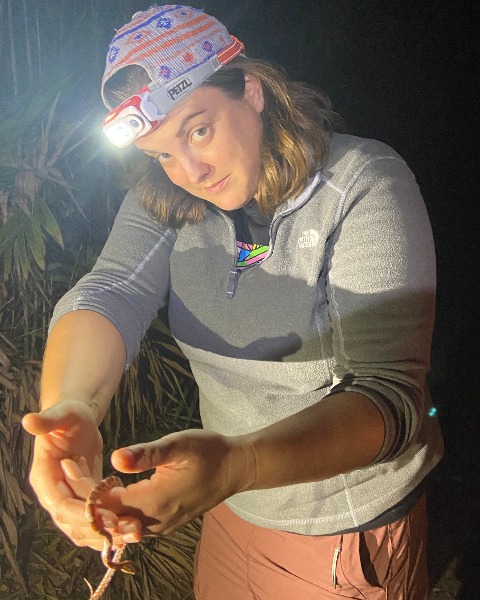10-Minute Presentation
Medical, Urban, and Veterinary Entomology
10-min: MUVE, Medical, Veterinary, and Forensic Entomology
Host associations of biting midges (Diptera: Ceratopogonidae: Culicoides) near sentinel chicken surveillance locations and their potential implications for Oropouche virus transmission and surveillance.
Wednesday, November 12, 2025
10:06 AM - 10:18 AM Pacific
Location: Oregon Convention Center, B114, OCC

Kristin Sloyer (she/her/hers)
Postdoctoral Fellow
University of Florida
Galveston, Texas- NB
Nathan Burkett-Cadena
Associate Professor
University of Florida
Vero Beach, Florida
Presenting Author(s)
Co-Author(s)
Biting midges of the genus Culicoides are known vectors of Oropouche virus (OROV) in Central and South America. OROV has historically been endemic to areas in and surrounding the Amazon rainforest, however recent outbreaks of OROV have resulted in a noticeable expansion of transmission to non-endemic areas. This has prompted revived interest in studying the ecology of Culicoides vectors. Notably, the vector–host relationships of Culicoides species are poorly documented. To study vector-host interactions, PCR–based blood-meal analysis was performed on 663 blood-engorged Culicoides females collected by 7 Florida mosquito control districts at 24 sentinel chicken arbovirus surveillance sites. A total of 638 blood meals were successfully analyzed to determine host species source, representing 11 Culicoides species. The most commonly bitten host was domestic chicken (Gallus gallus) (presumably sentinel chickens), constituting 565 of 638 (88.6%) the total blood meals. Other common hosts included humans (5.8%), white-tailed deer (Odoocoileus virginianus) (2.5%), and brown basilisk (Basiliscus vittatus) (1.6%). These results indicate that sentinel chickens are exposed to bites by Culicoides, potentially exposing them to Culicoides-borne pathogens, and allowing for early interventions if chickens seroconvert before human transmission begins. With a growing number of travel-related cases in the US, particularly in Florida (103/109 US cases), these findings are critical, showing that mosquito control programs may be able to adapt their arboviral surveillance programs to include Oropouche virus detection.
.png)
